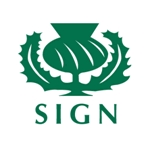The guideline follows the patient’s journey of care from prevention and awareness through treatment to follow up and rehabilitation, making generic recommendations which hold for all head and neck cancers. The treatment sections focus specifically on cancers of the larynx, oral cavity, oropharynx and hypopharynx, as these are the tumour sites with the highest incidences. The guideline does not cover tumours of the nasopharynx, sinuses, salivary glands or thyroid.
This guideline will be of interest to all healthcare professionals working with patients with head and neck cancers, including ear, nose and throat specialists, oral and maxillofacial surgeons, plastic surgeons, general surgeons, clinical oncologists, nurses and allied health professionals.
Note:- This guideline is now more than 7 years old and should be used with caution .

